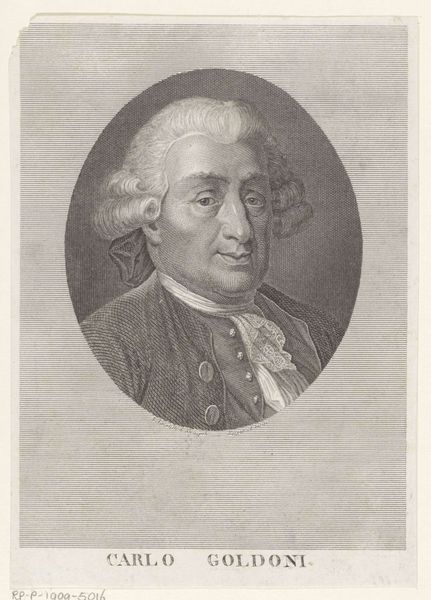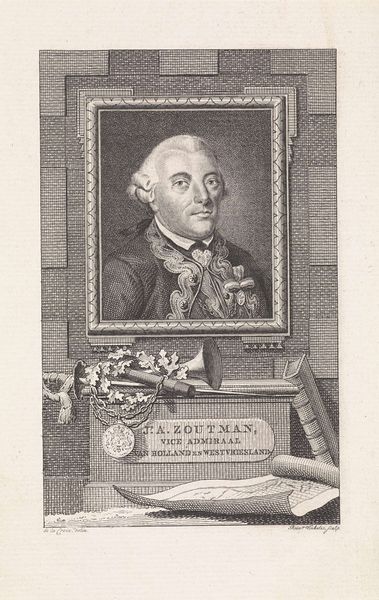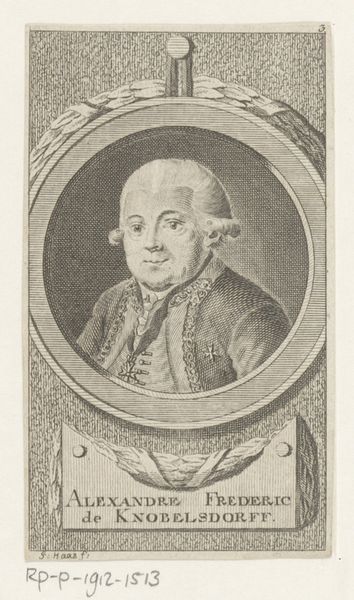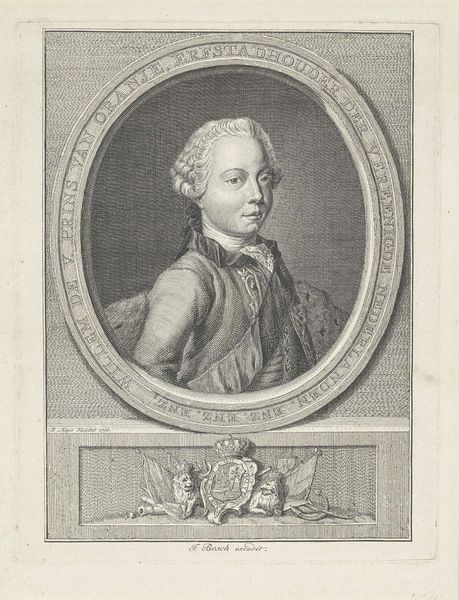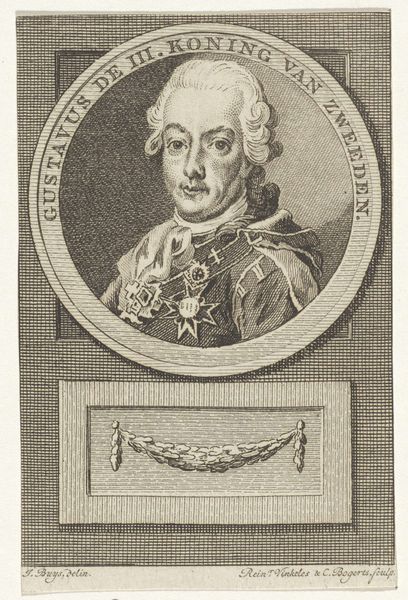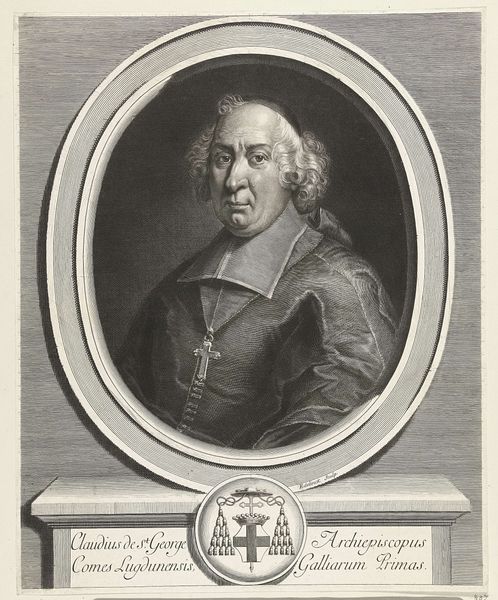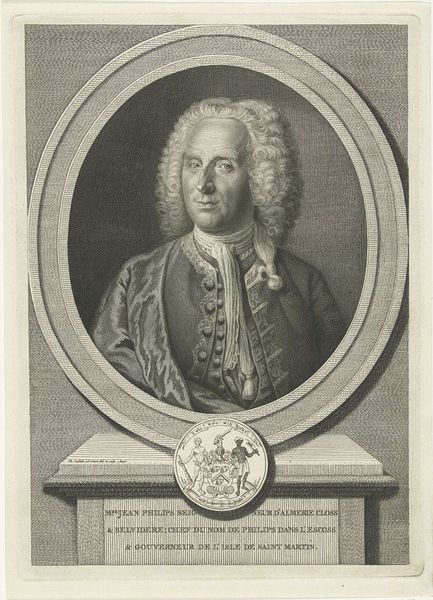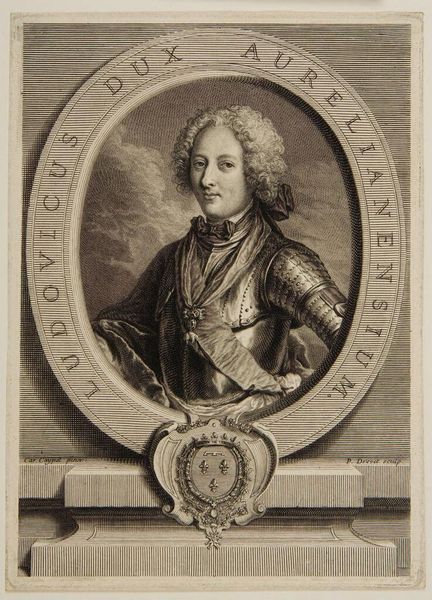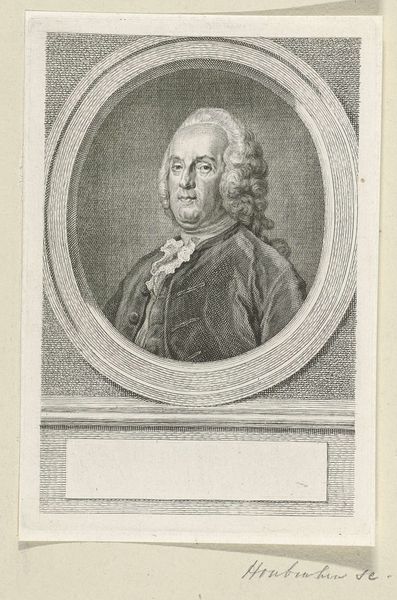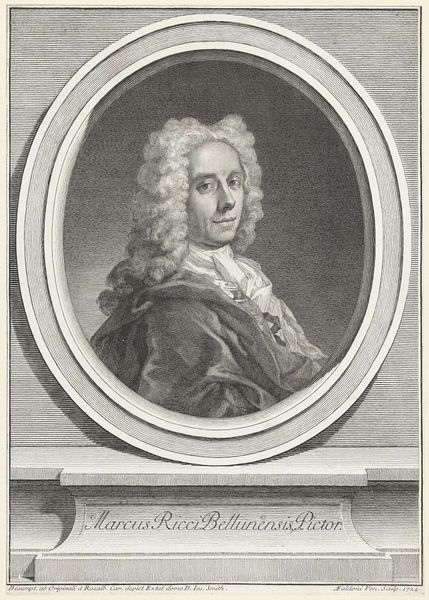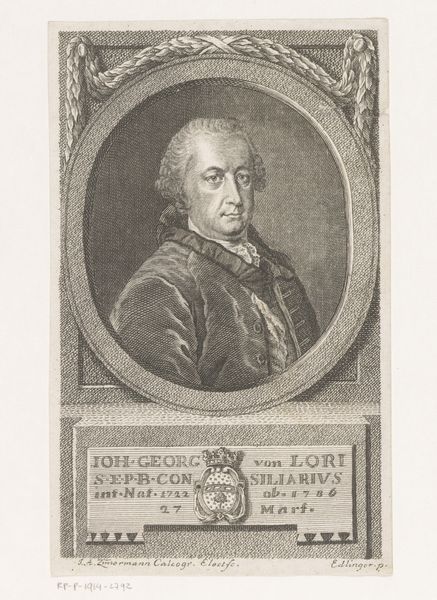
engraving
#
portrait
#
baroque
#
old engraving style
#
portrait reference
#
history-painting
#
engraving
Dimensions: height 127 mm, width 82 mm
Copyright: Rijks Museum: Open Domain
Jacob Folkema made this engraving of Charles de Fieux de Mouhy sometime in the 18th century. As a cultural artifact, it provides a glimpse into the values of that time. The portrait is more than just a likeness; it's a carefully constructed image of status and authority. The armor and elaborate wig are visual cues that speak to Mouhy's social standing. In 18th century Europe, such markers were essential in a society deeply stratified by class. But the image's meaning is not fixed. Mouhy was a notorious writer of scandalous novels; this portrait might be a form of self-aggrandizement, a way to assert his place in the literary world despite the controversial nature of his work. To fully understand this image, we delve into the social and literary history of the 1700s. Resources like period publications, letters, and institutional records can reveal how individuals like Mouhy navigated the complex social landscape of their time.
Comments
No comments
Be the first to comment and join the conversation on the ultimate creative platform.
